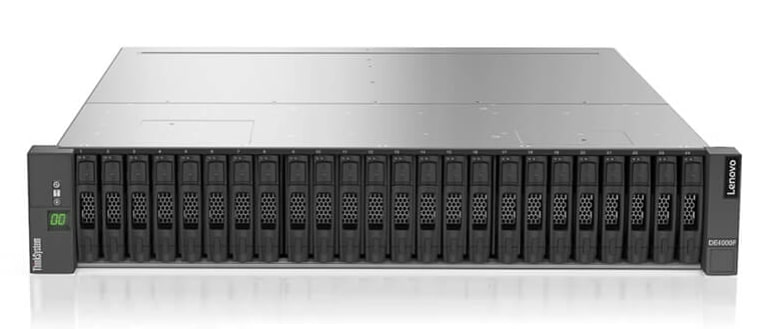All Flash Array Checklist
This checklist outlines the differences between different types of flash storage and what to look for when considering an all flash array.
All Flash Array Uses
Any organisation today should at least have all flash arrays on their radar. Five years ago this wouldn’t be worth doing unless you had an enormous budget or needed to solve some super complicated task quickly. The price of flash has tumbled and will continue to do so for the foreseeable future, but as the price comes down the capacity goes up.
The all flash arrays we provide are designed to work virtualization technologies VMware, Hyper-V, Citrix, VDI as well as storage for Video, CCTV, Post Production, D2D, backup/archiving, The Cloud, data centres and many other applications.

If your thinking about traditional disk storage, also think of this as a flash storage opportunity.
Flash stores data by use an electrical current to etch into Silicon a data bit and this causes Wear Levelling, whereby after so many programmed erase / write cycles the Flash wears out and this could be 10,000, 100,00 or 1,000,000 writes depending on the type of flash used. Manufacturers overcome this problem in a number of ways by using sophisticated algorithms to work out how many times each cell has been used and then automatically re-map those blocks to another portion of Flash Storage.
There are three types of Wear Levelling:
- No Wear Levelling – Nothing is done with the cells and it wears out
- Dynamic Wear Levelling – Data is written evenly across the whole of the Flash
- Static Wear Levelling – Works out how many times a cell has been written and dynamically moves it.
If you want to know more about Flash Wear, please visit this site http://www.radio-electronics.com/info/data/semicond/memory/flash-wear-reliability-lifetime.php
Essential Flash Array Checklist
When considering an all flash arrays the features a flash vendor offers might not be deliverable to you i.e. network performance, host controllers, application issues etc. So below is a simple checklist to get you started.

- Is your storage vendor able to provide a “Proof of Concept” for 30 days? this way you should be able to determine if it works in your environment without the cost of a whole new computer system and network purchase.
- How long do they warrant the flash storage? As explained above all flash suffers from wear and you need to ensure your warranty covers this, based on your usage.
- Can they provide future proofing? Flash storage whilst isn’t as yet as affordable as spinning disks. Nonetheless, this will be an investment you are going to have for a while and in order to maximize the investment, you may need to upgrade during the product life-cycle. Are the controllers upgrade-able to newer storage interfaces? Can you “mix n match” drive capacities?
- System support and maintenance Can the system be maintained and supported once the initial maintenance contract has expired and at what increased cost? This has been a bug bear for many companies over the years as system that is 3 years old suddenly becomes outlandishly expensive to maintain on the 37th month and you are forced to look at upgrading or look at alternatives. You might want to seat the asset for another couple of years in order to get a good ROI.
- Do they provide a “Capacity or Performance” guarantee? Your storage vendor should be saying for your environment we guarantee our storage will deliver “X” performance and “Y” capacity, this should be provided in writing. If the capacity isn’t enough and you have a guarantee how do they intend to make up the shortfall?
- How is performance provided? So in order for your to see i.e. 200,000 IOPS do you need to purchase a fully configured system or does it provide this figure as a starting block or are the provided figures based on realistic workloads or theoretical test lab results.
- Under what load and latency is performance delivered? There is no point in spending good money if the storage you are buying can only deliver the performance you need at 50% load, how does performance drop off hereafter? Latency is just as important when looking at flash storage your applications might need 1 ms response, but this can only be delivered at 30% load.
- Is the system completely resilient and redundant? This is likely to be a major investment and as such needs to be the most reliable and performing. Are all components easy to replace, extra controllers, PSU’s, backplanes, redundant data paths etc. How is performance affected if a controller fails?
- How easy is it to manage? Gone are the days where storage systems took weeks to install and required tweaking over weeks or months. Nowadays it should take no more than 2 days from opening the box to running your application. Software wizards should be available for you to easily and efficiently get your flash storage up and running. What sort of monitoring and management is provided?
- Can your flash array scale? We already know that this is a long term investment, therefore we do not want to be in a situation 3 years down the road having to go cap in hand for more money because we can’t increase capacity or performance and we need to look at alternatives.
- How do they achieve the storage capacities quoted? One word “deduplication“, in order to deliver the quoted storage capacities all Flash storage vendors use deduplication to provide realistic achievable storage capacities. Typically these could be 5:1 or higher depending on the type of workload and application.
- Invest in infrastructure. A flash storage array will deliver super fast performance, but in order for the whole organization to benefit, networks, host connectivity and servers need to be upgraded.
- Can your all flash array support NVMe drives? An array using NVMe will see a performance increase of approximately 10x that of SSD based arrays.
What can all flash arrays do for business?
Introduce flash arrays to your business and see immediate results. Putting an SSD into an old laptop will see boot times drop from minutes to seconds and this is exactly what you will see with flash. It greatly decreases response times, writes times and read times for all applications.
Should you invest in Flash Arrays?
If you are serious about future proofing your business for the next 5-10 years then I would have to say “Flash array should have a part to play”. Yes, it is more expensive than spinning disks, but that price is easily offset by the dramatic performance gains for applications and operating systems, energy savings and overall a fantastic ROI. Flash arrays should be your top storage tier and spinning disk used for backup/archiving and general purpose storage. Look for an all flash storage vendor that will allow you to “Pay As You Grow”, this essentially allows you to purchase a solution based on your business requirements for the next 1-2 years, after this time you might want to expand for capacity or performance. Adding a tray of drives or extra controllers shouldn’t mean excessive downtime or service charges, the flash storage should adjust itself automatically with a few simple clicks.
How can we help?
With our extensive knowledge and vendor relationships, we will be able to provide complete flash arrays that fit your requirements and enable your business to flourish.
